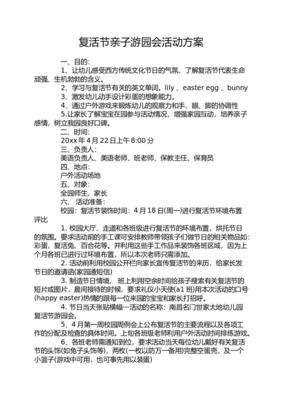定制物流設(shè)計(jì)方案英文可以表述為Custom Logistics Design Plan。
本文目錄導(dǎo)讀:
- 定制物流設(shè)計(jì)方案
- 英文表達(dá)方式
- 參考文獻(xiàn)
隨著全球化和電子商務(wù)的快速發(fā)展,,定制物流已成為企業(yè)競(jìng)爭(zhēng)的重要手段之一,,定制物流是指根據(jù)客戶的需求,提供個(gè)性化的物流解決方案,,以滿足客戶的特殊需求,,為了提高企業(yè)的競(jìng)爭(zhēng)力,本文將介紹一種定制物流設(shè)計(jì)方案,,并闡述其英文表達(dá)方式,。
定制物流設(shè)計(jì)方案
1、客戶需求分析:了解客戶的需求,,包括貨物類型,、運(yùn)輸時(shí)間、運(yùn)輸方式,、安全要求等,,以便為客戶提供個(gè)性化的物流解決方案,。
2、物流網(wǎng)絡(luò)規(guī)劃:根據(jù)客戶需求,,規(guī)劃合理的物流網(wǎng)絡(luò),,包括運(yùn)輸路線、倉(cāng)儲(chǔ)設(shè)施,、配送中心等,。
3、物流運(yùn)作管理:制定詳細(xì)的物流運(yùn)作流程,,包括訂單處理,、貨物裝卸、運(yùn)輸,、倉(cāng)儲(chǔ),、配送等環(huán)節(jié),確保物流運(yùn)作的高效性和準(zhǔn)確性,。

4,、信息系統(tǒng)支持:建立完善的物流信息系統(tǒng),實(shí)現(xiàn)物流信息的實(shí)時(shí)跟蹤和反饋,,提高物流運(yùn)作的透明度和可控性,。
5、客戶服務(wù)與支持:提供優(yōu)質(zhì)的客戶服務(wù),,包括訂單查詢,、投訴處理、問題解答等,,確??蛻魸M意度和忠誠(chéng)度。
英文表達(dá)方式
1,、Customer Requirements Analysis: Analyze customer needs, including cargo type, transportation time, transportation mode, safety requirements, etc., to provide personalized logistics solutions for customers.
2,、Logistics Network Planning: Plan a reasonable logistics network according to customer needs, including transportation routes, storage facilities, distribution centers, etc.
3、Logistics Operations Management: Develop detailed logistics operations processes, including order processing, cargo handling, transportation, storage, and distribution, to ensure the efficiency and accuracy of logistics operations.
4,、Information System Support: Establish a comprehensive logistics information system to achieve real-time tracking and feedback of logistics information, improving the transparency and controllability of logistics operations.
5,、Customer Service and Support: Provide excellent customer service, including order inquiry, complaint handling, and question answering, to ensure customer satisfaction and loyalty.
本文介紹了定制物流設(shè)計(jì)方案及其英文表達(dá)方式,旨在為企業(yè)提供一種有效的物流解決方案,,以滿足客戶的特殊需求,,提高企業(yè)的競(jìng)爭(zhēng)力,通過分析客戶需求,、規(guī)劃物流網(wǎng)絡(luò),、管理物流運(yùn)作、支持信息系統(tǒng)和提供優(yōu)質(zhì)客戶服務(wù),,企業(yè)可以為客戶提供個(gè)性化的物流解決方案,,實(shí)現(xiàn)物流運(yùn)作的高效性和準(zhǔn)確性,,企業(yè)還可以通過與國(guó)際接軌,提高自身的國(guó)際化水平,,拓展國(guó)際市場(chǎng),。
參考文獻(xiàn)
在文章結(jié)尾處列出相關(guān)的參考文獻(xiàn),以示對(duì)文中觀點(diǎn)的支持和證明,,參考文獻(xiàn)應(yīng)按照規(guī)范格式排版,,并注明作者姓名、論文標(biāo)題,、期刊名稱,、出版日期等信息,參考文獻(xiàn)的數(shù)量和來源應(yīng)根據(jù)實(shí)際情況合理選擇,,以確保文章的可信度和說服力,。
本文章內(nèi)容與圖片均來自網(wǎng)絡(luò)收集,如有侵權(quán)聯(lián)系刪除。



















![提問內(nèi)容設(shè)計(jì)方案[提問設(shè)計(jì)的基本要求]](https://wines-world.net/zb_users/upload/broadcast/2024-05-03/6634e5a463231.jpeg)
![景觀設(shè)計(jì)構(gòu)成設(shè)計(jì)方案[景觀設(shè)計(jì)構(gòu)成設(shè)計(jì)方案模板]](https://wines-world.net/zb_users/upload/broadcast/2024-05-11/663eb89b26e5c.jpeg)

![超市怎么設(shè)計(jì)方案[超市如何設(shè)計(jì)效果圖]](https://wines-world.net/zb_users/upload/broadcast/2024-05-03/663445338b6c2.jpeg)

![客廳設(shè)計(jì)方案簡(jiǎn)介[客廳設(shè)計(jì)方案簡(jiǎn)介怎么寫]](https://wines-world.net/zb_users/upload/broadcast/2024-05-01/6631cba6b321b.jpeg)
初次見面,,請(qǐng)?zhí)顚懴滦畔?